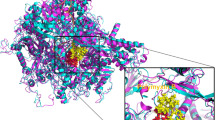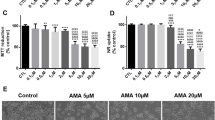Abstract
Amanita phalloides is one of the most toxic mushrooms worldwide, and it is involved in the majority of human fatal cases of mushroom poisoning. α-Amanitin, the most deleterious toxin of A. phalloides to humans, inhibits RNA polymerase II (RNAPII), causing hepatic and renal failure. Previously, we have shown that polymyxin B (polB) reverts α-amanitin inhibition of RNAPII, although it was not able to guarantee the full survival of α-amanitin-intoxicated mice or prevent α-amanitin pro-inflammatory effects. α-Amanitin is also a substrate of the organic-anion-transporting polypeptide 1B3 (OATP1B3) and Na(+)-taurocholate cotransporter polypeptide (NTCP) transporters. Therefore, in the present work, we used a combination of polB [(2.5 mg/kg intraperitoneal (i.p.)] with the anti-inflammatory and NTCP inhibitor drug, methylprednisolone (MP) (10 mg/kg i.p.), as an attempt to fully revert α-amanitin-induced toxicity (0.33 mg/kg i.p.) in CD-1 mice. Results showed that the administration of the polB + MP combination, 4 h after α-amanitin, led to the full survival of the intoxicated animals, with a significant attenuation of α-amanitin-induced renal and hepatic necrosis. Also, the combination polB + MP led to a decrease of aminotransferase plasma levels, of the renal myeloperoxidase activity and of renal inflammatory cell infiltrate promoted by α-amanitin, although not preventing any of the hepatic pro-inflammatory effect of the toxin. The obtained results indicate that this combination may represent an important and valuable therapeutic approach to be used against α-amanitin intoxication.







Similar content being viewed by others
Abbreviations
- AP:
-
Alkaline phosphatase
- ALT:
-
Alanine aminotransferase
- AST:
-
Aspartate aminotransferase
- MLD:
-
Minimum lethal dose
- MPO:
-
Myeloperoxidase
- NF-κB:
-
Nuclear factor kappa-B
- NTCP:
-
Na(+)-taurocholate cotransporter polypeptide
- OATP:
-
Organic-anion-transporting polypeptide
- TMB:
-
3,3′,5,5′-tetramethylbenzidine
- RNAPII:
-
RNA polymerase II
- TNF-α:
-
Tumor necrosis factor-α.
References
Barbosa DJ, Capela JP, Oliveira JM, Silva R, Ferreira LM, Siopa F, Branco PS, Fernandes E, Duarte JA, de Lourdes Bastos M, Carvalho F (2012) Pro-oxidant effects of Ecstasy and its metabolites in mouse brain synaptosome. Br J Pharmacol 165(4b):1017–1033
Brown KE, Brunt EM, Heinecke JW (2001) Immunohistochemical detection of myeloperoxidase and its oxidation products in Kupffer cells of human liver. Am J Pathol 159(6):2081–2088
Dong Z, Ekins S, Polli JE (2013) Structure activity relationship for FDA approved drugs as inhibitors of the human sodium taurocholate co-transporting polypeptide (NTCP). Mol pharm 10(3):1008–1019
Feinberg SM, Feinberg AR, Pruzansky J, Fisherman EW (1957) Methylprednisolone (medrol), a potent new anti-inflammatory steroid: Therapeutic results in allergic diseases. J Am Med Assoc 165(12):1560–1562
Ferreira R, Vitorino R, Neuparth MJ, Appell H-J, Amado F, Duarte JA (2007) Cellular patterns of the atrophic response in murine soleus and gastrocnemius muscles submitted to simulated weightlessness. Eur J Appl Physiol 101(3):331–340
Fiume L, Marinozzi V, Nardi F (1969) The effects of amanitin poisoning on mouse kidney. Br J Exp Pathol 50(3):270–276
Floersheim GL (1976) Antagonistic effects against single lethal doses of Amanita phalloides. Naunyn Schmiedebergs Arch Pharmacol 293(2):171–174
Garcia J, Costa VM, Carvalho A et al (2015a) Amanita phalloides poisoning: mechanisms of toxicity and treatment. Food Chem Toxicol 86:41–55
Garcia J, Costa VM, Carvalho AT et al (2015b) A breakthrough on Amanita phalloides poisoning: an effective antidotal effect by polymyxin B. Arch Toxicol 89(12):2305–2323
Garcia J, Costa VM, Costa AE et al (2015c) Co-ingestion of amatoxins and isoxazoles-containing mushrooms and successful treatment: a case report. Toxicon 103:55–59
Gobe GC, Johnson DW (2007) Distal tubular epithelial cells of the kidney: Potential support for proximal tubular cell survival after renal injury. Int J Biochem Cell Biol 39(9):1551–1561
Gross S, Gammon ST, Moss BL et al (2009) Bioluminescence imaging of myeloperoxidase activity in vivo. Nat med 15(4):455–461
Gummin DD, Mowry JB, Spyker DA, Brooks DE, Fraser MO, Banner W (2017) Annual report of the American association of poison control centers’ national poison data system (NPDS): 34th annual report. Clin Toxicol (Phila) 55(10):1072–1252
Gundala S, Wells LD, Milliano MT, Talkad V, Luxon BA, Neuschwander-Tetri BA (2004) The hepatocellular bile acid transporter Ntcp facilitates uptake of the lethal mushroom toxin alpha-amanitin. Arch Toxicol 78(2):68–73
Jacek R, Elżbieta PJ, Andrzej K et al (2004) Successful treatment of a child with fulminant liver failure and coma caused by Amanita phalloides intoxication with albumin dialysis without liver transplantation. Pediatr Transplant 8(3):295–300
Kalač P (2009) Chemical composition and nutritional value of European species of wild growing mushrooms: a review. Food Chem 113(1):9–16
Kiberd BA, Young ID (1994) Modulation of glomerular structure and function in murine lupus nephritis by methylprednisolone and cyclophosphamide. J Lab Clin Med 124(4):496–506
Klein AS, Hart J, Brems JJ, Goldstein L, Lewin K, Busuttil RW (1989) Amanita poisoning: treatment and the role of liver transplantation. Am J Med 86(2):187–193
Krasnodebski M, Grat M, Holowko W et al (2016) Results of liver transplantation in patients with acute liver failure due to Amanita phalloides and paracetamol (acetaminophen) intoxication. Prz Gastroenterol 11(2):90–95
Leist M, Gantner F, Naumann H et al (1997) Tumor necrosis factor-induced apoptosis during the poisoning of mice with hepatotoxins. Gastroenterology 112(3):923–934
Letschert K, Faulstich H, Keller D, Keppler D (2006) Molecular characterization and inhibition of amanitin uptake into human hepatocytes. Toxicol Sci 91(1):140–149
Lowry OH, Rosebrough NJ, Farr AL, Randall RJ (1951) Protein measurement with the Folin phenol reagent. J Biol Chem 193(1):265–275
Sadikot RT, Jansen ED, Blackwell TR et al (2001) High-dose dexamethasone accentuates nuclear factor-kappa b activation in endotoxin-treated mice. Am J Respir Crit Care Med 164(5):873–878
Schenk-Jaeger KM, Rauber-Luthy C, Bodmer M, Kupferschmidt H, Kullak-Ublick GA, Ceschi A (2012) Mushroom poisoning: a study on circumstances of exposure and patterns of toxicity. Eur J Intern Med 23(4):e85–e91
Su L, Li N, Tang H et al (2018) Kupffer cell-derived TNF-α promotes hepatocytes to produce CXCL1 and mobilize neutrophils in response to necrotic cells. Cell Death Dis 9(3):323
Temple A, Yen T-Y, Gronert S (2006) Identification of specific protein carbonylation sites in model oxidations of human serum albumin. J Am Soc Mass Spectrom 17(8):1172–1180
Vetter J (1998) Toxins of Amanita phalloides. Toxicon 36(1):13–24
Wieland T, Faulstich H (1978) Amatoxins, phallotoxins, phallolysin, and antamanide: the biologically active components of poisonous Amanita mushrooms. CRC Crit Rev Biochem 5(3):185–260
Yan LJ, Traber MG, Kobuchi H, Matsugo S, Tritschler HJ, Packer L (1996) Efficacy of hypochlorous acid scavengers in the prevention of protein carbonyl formation. Arch Biochem Biophys 327(2):330–334
You Y, Qin Y, Lin X et al (2015) Methylprednisolone attenuates lipopolysaccharide-induced Fractalkine expression in kidney of Lupus-prone MRL/lpr mice through the NF-kappa B pathway. BMC Nephrol 16:148
Zheleva A, Tolekova A, Zhelev M, Uzunova V, Platikanova M, Gadzheva V (2007) Free radical reactions might contribute to severe alpha amanitin hepatotoxicity—a hypothesis. Med Hypotheses 69(2):361–367
Acknowledgements
We greatly acknowledge Dra Laura Pereira and Master Bárbara Duarte for their technical assistance in the determination of plasma parameters. VMC thanks Fundação para a Ciência e Tecnologia (FCT) for her grant SFRH/BPD/110001/2015. This work was supported by FEDER funds through the Operational Programme for Competitiveness Factors—COMPETE and by national funds by the Fundação para a Ciência e Tecnologia (FCT) within the project “PTDC/DTP-FTO/4973/2014– POCI-01-0145-FEDER- 016545”.
Author information
Authors and Affiliations
Corresponding authors
Ethics declarations
Conflict of interest
The authors declare that they have no conflict of interest.
Additional information
Publisher’s Note
Springer Nature remains neutral with regard to jurisdictional claims in published maps and institutional affiliations.
Rights and permissions
About this article
Cite this article
Garcia, J., Costa, V.M., Bovolini, A. et al. An effective antidotal combination of polymyxin B and methylprednisolone for α-amanitin intoxication. Arch Toxicol 93, 1449–1463 (2019). https://doi.org/10.1007/s00204-019-02426-5
Received:
Accepted:
Published:
Issue Date:
DOI: https://doi.org/10.1007/s00204-019-02426-5




